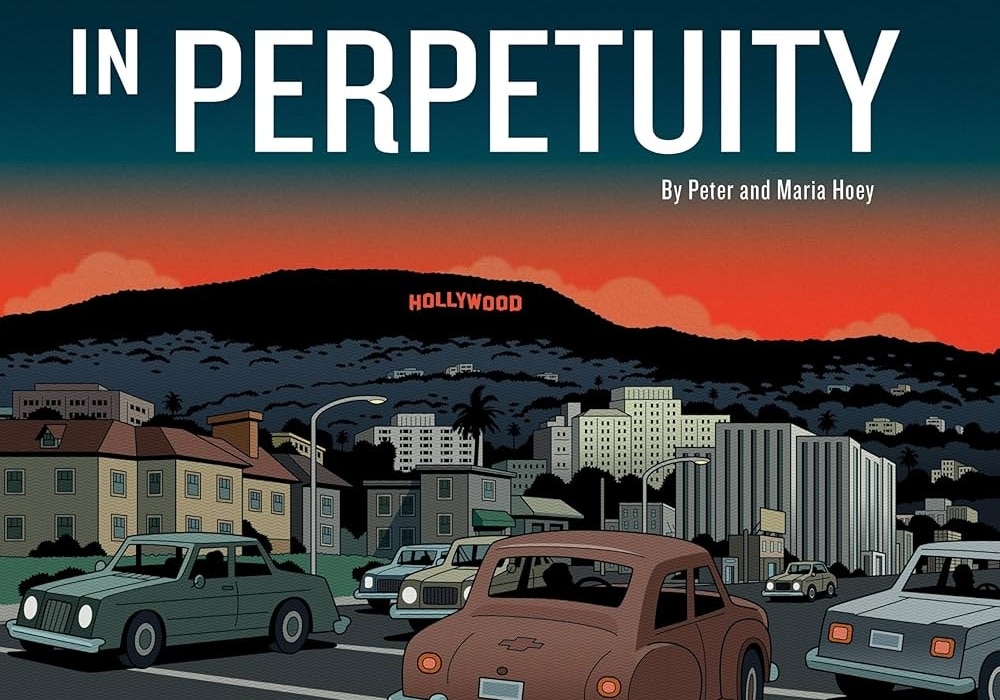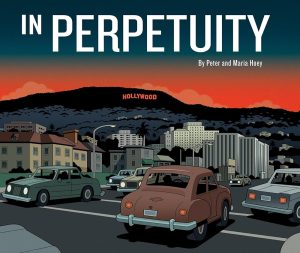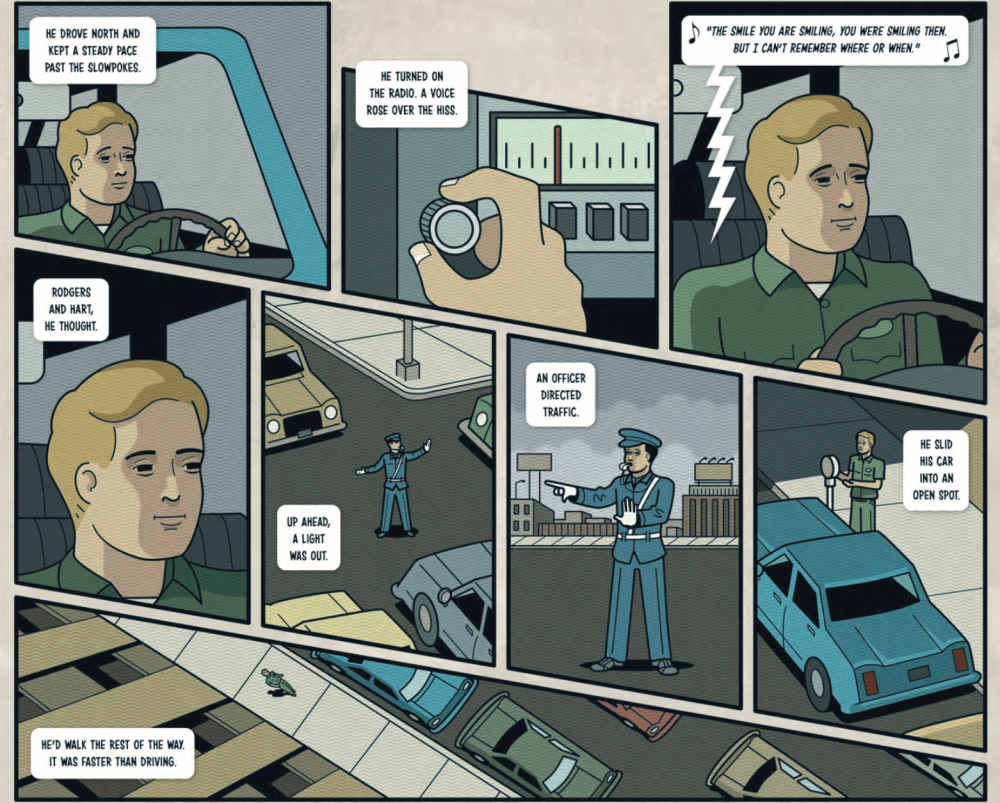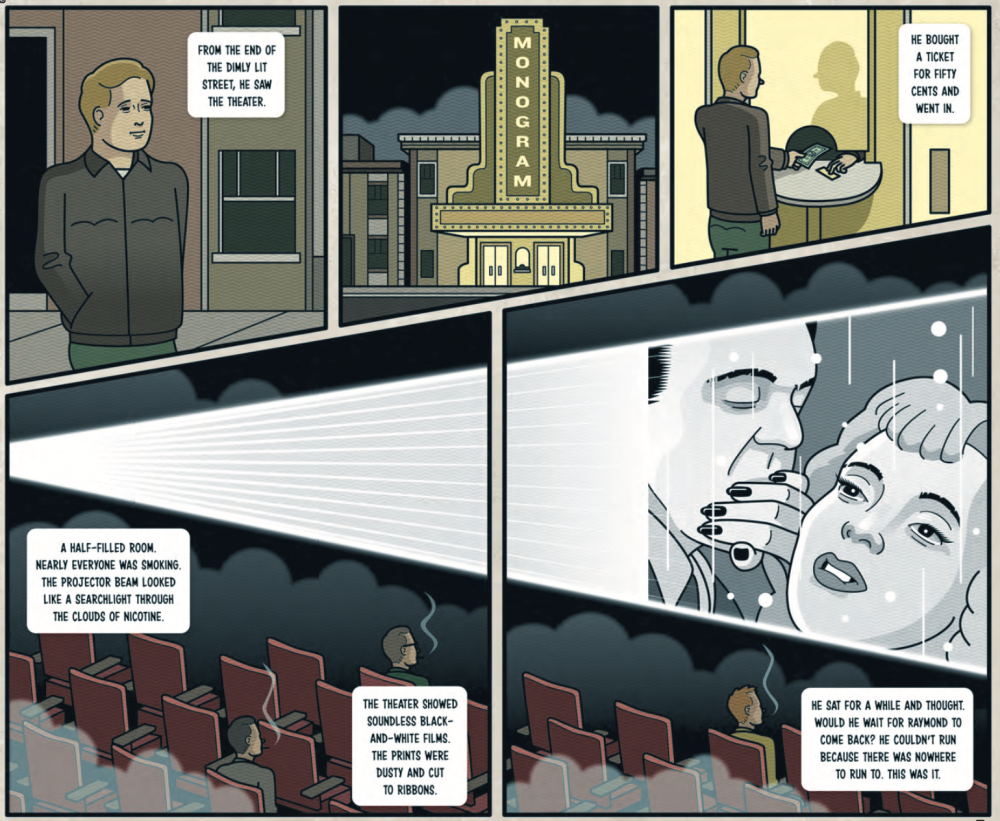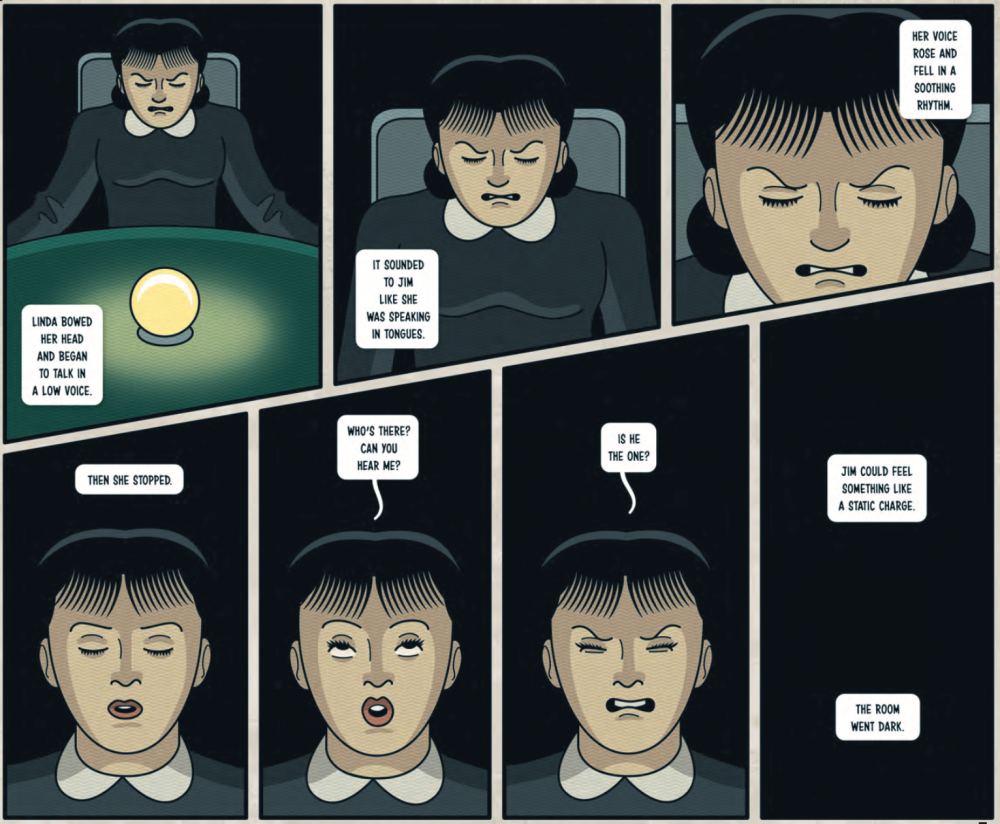In Perpetuity
Cartoonists: Peter Hoey and Maria Hoey
Publisher: Top Shelf
Publication Date: April 25, 2024
Price: $19.99
Buy In Perpetuity on Bookshop.org.
The latest graphic novel from cartoonist siblings Peter Hoey and Maria Hoey, In Perpetuity, released on April 25 by Top Shelf, is a surreal, humorously bleak take on how the afterlife might not be through with us.
The story centers around Jimmy, a man who has died, but who finds himself swept up in a criminal underworld within the afterlife version of Los Angeles: A.L, featuring a black sun, perpetual night, and deceased occupants who go through nostalgic yet banal motions like watching very old movies, going to bars, and working at simple service jobs.
When Jimmy discovers that he has the power to cross between A.L. and L.A., and people want to use that power for their own ends, his troubles have only begun. And thus begins an offbeat, noir suspense story that kept me turning the pages.
For me, the most rewarding part of the story was the conceptually rich setting. The symmetry between L.A. and A.L., which felt equally surreal (suggesting an artificial quality to the real Los Angeles), the idea of an underworld where many people kill time in a stupor, and the idea of people who can cross between life and death left a lasting impression on me. Per an interview with the Hoeys, mythology played a heavy role in the setting’s construction. It feels like there could be a lot of stories going on in this universe.
Before I go further, I have to mention the distinctive artwork, which plays a big role in the feel of the story. The credits imply that the Hoeys collaborated on both art and writing in the book, rather than one taking on artwork and one doing writing. I’m still curious who does what exactly, but however they split things up, they manage to create a unified feel.
Their art style is skillful and iconic: clean and minimal, with architectural precision. Their simplified characters’ faces tend to have simplified emotional expressions, like surprise, mild pleasure, or malice. There is also a static quality that reminds me of an infographic or old-time magazine ad. For example, characters’ hairdos seem molded in place. Mostly flat colors and uniform line thickness complete the look. I found the effect unsettling and distancing here, like watching china dolls act out a story, yet also amusing because the visuals seem comically understated for many of the situations. The Hoeys used this same style for another book I picked up by them, The Bend of Luck, so it seems to be their signature look.
In In Perpetuity, the muted expressions and stiff bodies also suggest a dulling of emotional experience for the characters, almost a sterility that feels fitting amidst the characters’ gray afterlives. The iconic look also lends the feeling of an archetypal fable unfolding. The words match the detached style of the art, with a third person narrator stating the facts of situations to back up naturalistic dialogue.
I noticed some recurring themes for the Hoeys after reading two books by them. Fate and luck are important undercurrents in both stories, emphasized by physical talismans of luck, as well as greedy people, and despairing victims of circumstance. At times, I questioned whether the characters had any control over their own lives.
In this story, Jimmy felt defined by his persistence in the face of unfortunate circumstances. Another character, Olivia, felt defined by her haplessness. I believe in greater freedom of choice than what is shown here, but it was thought-provoking to see a story where powerful people manipulate the system and innocents get caught in the undertow.
Sometimes the main characters’ decisions frustrated me, as they seemed incapable of avoiding temptation or running headlong into bad places. In Perpetuity also contains a number of unsavory villains and disturbing situations. One scene made me feel ill and I had to stop reading for a bit.
I should say, I don’t read a lot of noir, crime, or suspense stories, but the fantasy setting intrigued me. If you seek out more of the aforementioned genres, you may be more of the target audience than I. There is also an undercurrent of satire, an examination of certain absurdities of society through a fantastical lens.
The Hoeys successfully kept me on edge, always waiting to see if the protagonists could get themselves out of this one. I didn’t see the ending coming.
It’s an ambitious work, with more plot threads than The Bend of Luck. I’m not sure I fully understood the complex system of between-world interplay within In Perpetuity, although I found some aspects clever and fitting for Los Angeles.
Do we have free will, or are we fated to fall into certain situations? What might the afterlife look like if it contained the same moral quandaries as our own world? With stylish strokes, In Perpetuity explores the Hoeys’ responses to these questions and takes us on a suspenseful, whimsically dark journey.
Check out more great reviews from The Beat!



